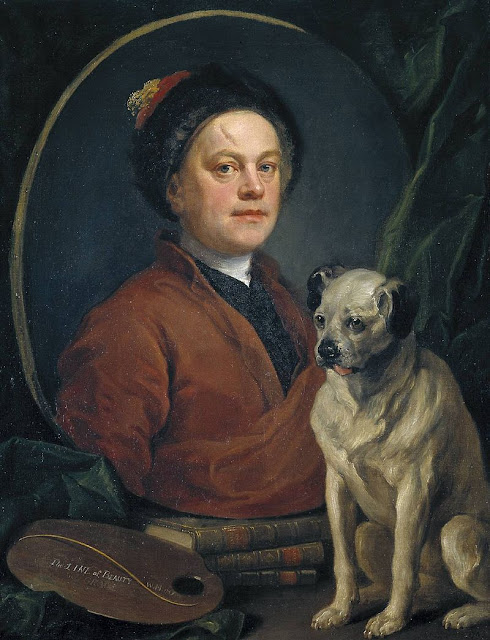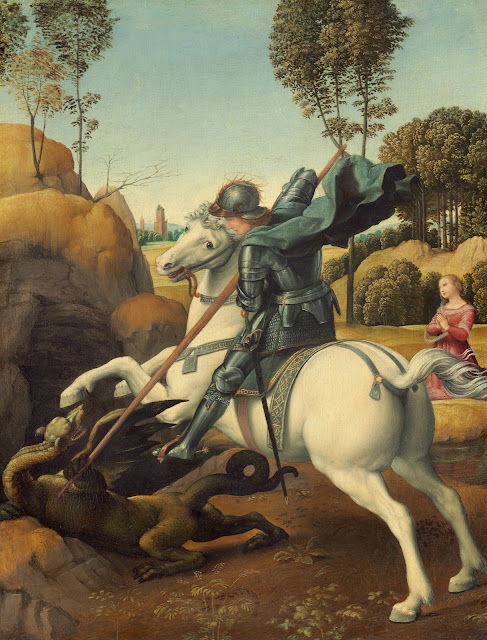The Painter and His Pug: A Window into Artistic Companionship and Creative Inspiration
Throughout history, artists have found inspiration in various forms and sources. Among these, the bond between artists and their pets has been a rich source of inspiration. "The Painter and His Pug," a charming painting by William Hogarth, serves as an endearing testament to the close relationship between an artist and his faithful companion. In this article, we will explore the location, history, and the deeper beliefs and sentiments encapsulated within this delightful work of art.
The Artist: William Hogarth
Before delving into the painting itself, it's important to introduce the artist responsible for this enchanting creation. William Hogarth (1697-1764) was a celebrated English painter, printmaker, and social commentator. He is perhaps best known for his series of moral and satirical paintings, such as "A Harlot's Progress" and "A Rake's Progress," which commented on the social issues of his time. Hogarth's work is characterized by its narrative quality, keen observations of human behavior, and distinctive satirical style.
The Location: 18th-Century London
"The Painter and His Pug" was created in London in the mid-18th century. This period marked the heart of the Georgian era, a time of significant social and cultural transformation in England. London, as the bustling center of the British Empire, was a vibrant city filled with artists, writers, and thinkers. It was against this backdrop that Hogarth created his endearing painting.
The Painting: "The Painter and His Pug"
"The Painter and His Pug" is a small oil on canvas work of art, measuring approximately 24 x 20 inches. The painting is an intimate self-portrait of the artist, William Hogarth, shown in the act of painting, with his beloved pet pug by his side. The scene is a studio interior, with the artist's palette and brushes visible on a nearby table. Hogarth gazes at the viewer with a mixture of pride, affection, and confidence, while his pug, a small dog with a wrinkled face and curled tail, looks directly at him.
Characteristics of the Painting
Intimacy and Companionship: "The Painter and His Pug" captures a moment of profound intimacy between the artist and his pet. The close bond between Hogarth and his pug is evident in the way the two figures interact, with the pug's adoring gaze and the artist's loving expression. This sense of companionship is at the heart of the painting's charm.
Artistic Self-Reflection: Hogarth's decision to paint himself at work reflects his self-awareness as an artist. He places himself in the role of both creator and subject, inviting viewers to contemplate the creative process and the connection between the artist and his art.
Symbolism: While the painting appears to be a simple self-portrait, it is imbued with symbolism. The pug, a breed known for its loyalty and affection, may symbolize the fidelity of art itself or serve as a reflection of Hogarth's own character. The palette and brushes on the table further emphasize the artist's dedication to his craft.
Beliefs and Sentiments
"The Painter and His Pug" is a visual representation of several beliefs and sentiments that were prevalent in 18th-century England:
Animal Companionship: The painting highlights the belief in the companionship and emotional support that animals can provide to humans. The close bond between Hogarth and his pug mirrors the affectionate relationships that many individuals shared with their pets during this era.
Art as a Personal Expression: Hogarth's inclusion of himself in the painting reflects the belief in the artist's role as a unique and individual creator. This notion, known as artistic self-expression, was gaining prominence during the Enlightenment period.
Humor and Irony: Hogarth was known for his satirical and humorous works, and while "The Painter and His Pug" is less overtly satirical than some of his other paintings, it carries a subtle sense of humor. The whimsical presence of the pug adds a lighthearted touch to the self-portrait.
Legacy and Artistic Significance
"The Painter and His Pug" remains a beloved work of art that transcends its time. It offers a glimpse into the personal life and creative spirit of William Hogarth while celebrating the enduring bond between humans and their animal companions. Beyond its artistic significance, the painting serves as a touching reminder of the universal human experience of love and companionship.
"The Painter and His Pug" by William Hogarth is more than just a portrait; it is a reflection of the profound bond that can exist between an artist and his faithful pet. This intimate work of art encapsulates the sentiments and beliefs of its era, while also transcending time to touch the hearts of viewers across generations. It invites us to contemplate the enduring themes of companionship, creativity, and the power of art to capture the essence of the human experience. Through the affectionate gaze of the pug and the pride in the artist's eyes, we are reminded of the simple yet profound joys of life and art.
Author Editor : Gerry Martinez





No comments:
Post a Comment